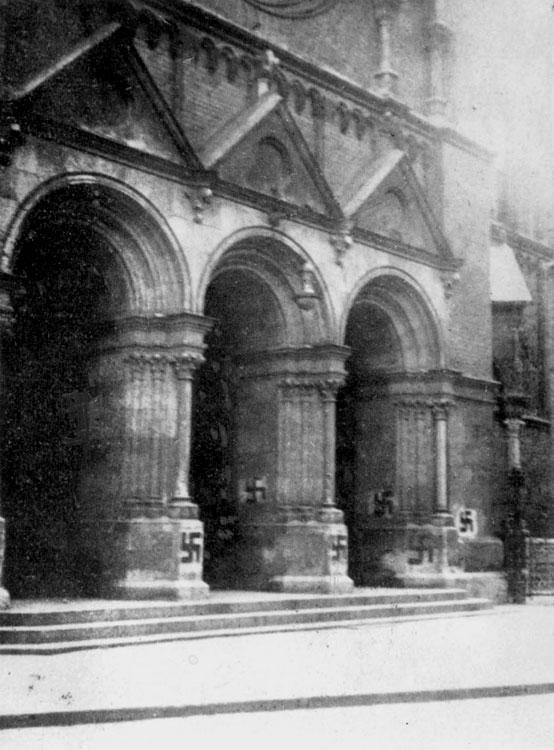In 1933, with the rise of the Nazis to power in Germany, about 9,000 Jews lived in Munich, approximately 1.2% of the city’s total population. They held public roles in the city’s economic, social and cultural life. The city had two synagogues – one of which was the Great Synagogue, built in 1884-1887 – as well as other smaller prayer houses. Dozens of Jewish organizations were active in the city, in the religious, educational, cultural, social and political spheres.
In 1922 the Nazi Party was established in Munich. The Voelkischer Beobachter, the Nazi Party’s central newspaper, was also published in Munich.
Earlier, in 1920, the head of the Bavarian government sought to deport the Jews from the state, yet in the end was unsuccessful. In 1923 an order was promulgated to deport 180 Jewish families of Eastern European descent. On the Jewish holiday of Sukkot 1923, the windows of the Great Synagogue were vandalized, and Jews in a different synagogue were beaten by a mob. The Great Synagogue in Munich was the first synagogue in Germany to be destroyed the Nazis. Hitler visited the city in June 1938 and ordered the destruction of the synagogue, because it was situated in close proximity to the German Artisans’ House. The destruction of the synagogue was scheduled to be completed by July 8, “German Art Day”. A few hours before the order was carried out, the heads of the Jewish community were officially given notice of the plans. Many members of the Jewish community worked throughout the night in order to remove the Torah scrolls and ritual objects from the synagogue.
The municipality only reimbursed the Jewish community for approximately one seventh of the value of the synagogue and the neighboring Jewish community building.
Yad Vashem Photo Archives 195/C85







